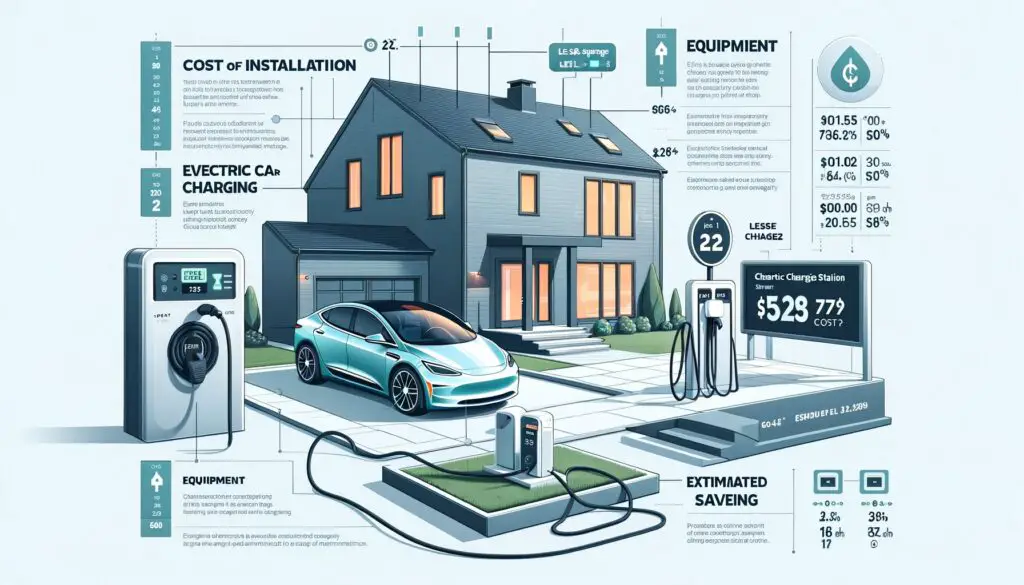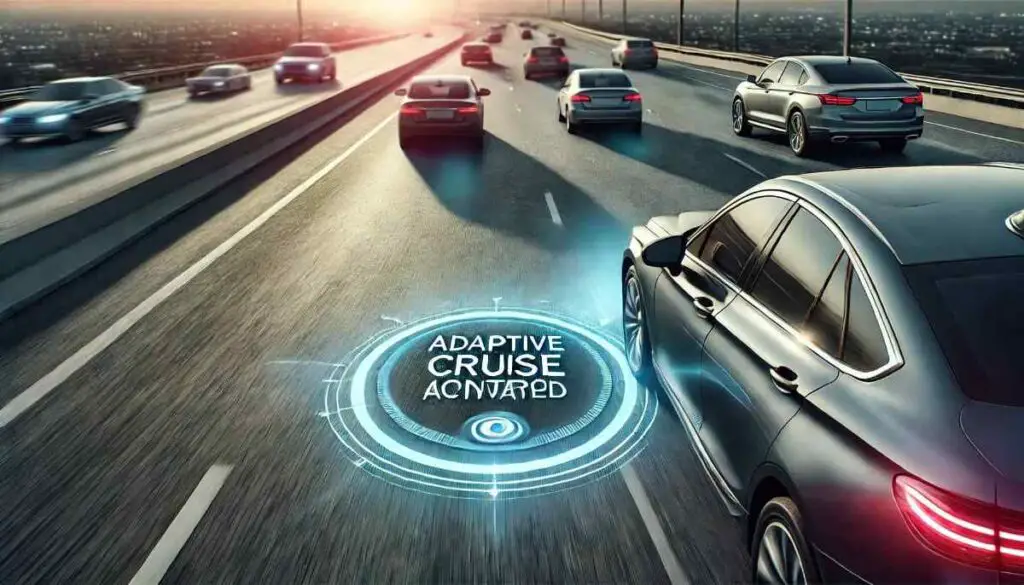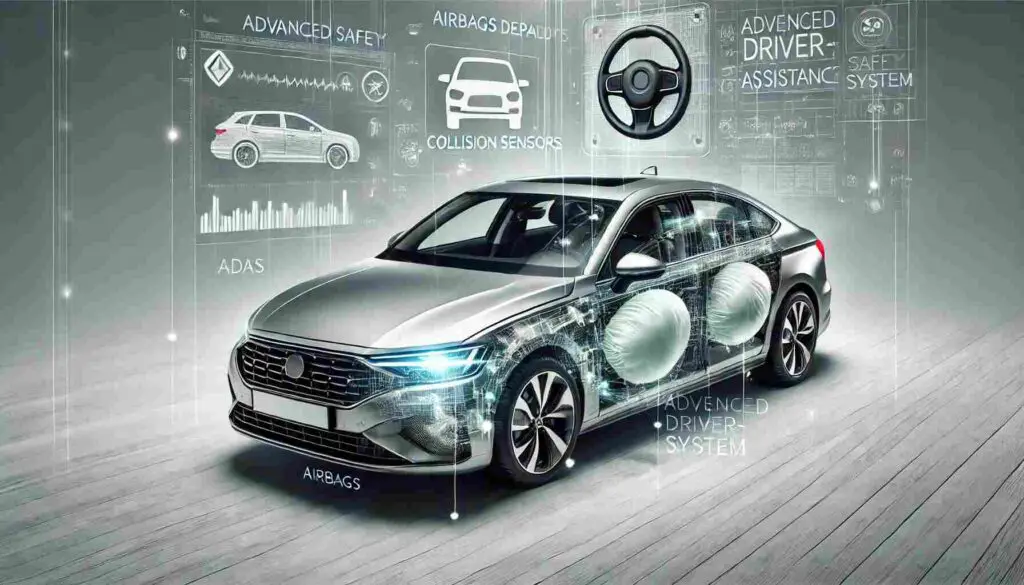In recent years, the surge in electric vehicle (EV) ownership has been remarkable. With the growing need for sustainable transportation solutions, more homeowners are considering the installation of at-home charging stations. In this guide, we delve into the intricacies of electric car charging stations, offering invaluable insights into costs, types, installation, maintenance, and more.
Understanding Electric Car Charging Stations
Electric car charging stations play a pivotal role in the widespread adoption of electric vehicles (EVs) by providing a convenient and accessible means of charging. Understanding the different types of charging stations is essential for EV owners to make informed decisions based on their needs and preferences.
Types of Electric Car Charging Stations
Level 1: Standard Outlets
Level 1 charging utilizes standard household outlets, typically delivering 120 volts of alternating current (AC) to the vehicle’s onboard charger. While Level 1 charging is the most basic and accessible option, it offers the slowest charging rate among the different levels. On average, Level 1 charging adds around 2-5 miles of range per hour of charging. This makes it suitable for overnight charging scenarios, where the vehicle can remain plugged in for extended periods without impacting daily routines. However, due to its slow charging speed, Level 1 charging may not be sufficient for EV owners with high daily mileage or those requiring quick recharge times for long trips.
Level 2: High-Speed Residential Charging
Level 2 charging stations require dedicated 240-volt circuits and utilize specialized charging equipment capable of delivering higher power levels to the vehicle’s battery. This results in significantly faster charging rates compared to Level 1. On average, Level 2 charging adds around 10-60 miles of range per hour, depending on factors such as the vehicle’s battery capacity and charging infrastructure. Level 2 stations are commonly installed in residential settings, providing EV owners with a versatile and efficient charging solution for daily use. The faster charging speeds offered by Level 2 stations make them ideal for homeowners looking to charge their EVs quickly and conveniently at home, without the need for frequent trips to public charging stations.
Level 3: DC Fast Charging
Level 3, also known as DC Fast Charging or DCFC, represents the fastest charging option available for electric vehicles. These stations deliver direct current (DC) power directly to the vehicle’s battery, bypassing the onboard charger and enabling rapid charging speeds. Level 3 charging stations are primarily found in public locations such as highways, shopping centers, and service stations, where EV owners can quickly recharge their vehicles during long journeys. DC Fast Charging can add approximately 60-80 miles of range to an EV battery in just 20 minutes, making it the preferred choice for drivers seeking ultra-fast charging capabilities. However, due to the high costs associated with equipment installation and maintenance, as well as the specialized infrastructure requirements, Level 3 charging is not commonly installed in residential settings.
Pros and Cons
Each type of electric car charging station offers its own set of advantages and limitations, which should be carefully considered by EV owners when selecting the most suitable charging solution.
- Level 1 Charging Pros:
- Simplicity: Utilizes standard household outlets, requiring minimal installation and setup.
- Low Costs: Relatively inexpensive compared to Level 2 and Level 3 charging stations.
- Accessibility: Can be used with any standard electrical outlet, making it widely available for residential charging.
- Level 1 Charging Cons:
- Slow Charging Speed: Offers the slowest charging rate among the different levels, limiting its suitability for high-mileage or time-sensitive charging needs.
- Limited Range: May not provide sufficient range replenishment for long trips or daily commutes with extensive driving requirements.
- Level 2 Charging Pros:
- Faster Charging Speed: Delivers significantly faster charging rates compared to Level 1, making it suitable for quicker replenishment of EV batteries.
- Versatility: Compatible with a wide range of EV models and battery capacities, offering flexibility for homeowners with varying charging needs.
- Convenience: Ideal for daily charging routines, providing efficient and reliable charging at home without the need for frequent visits to public charging stations.
- Level 2 Charging Cons:
- Installation Requirements: Requires dedicated 240-volt circuits and specialized charging equipment, which may necessitate professional installation and upfront investment.
- Infrastructure Limitations: While suitable for residential use, Level 2 charging may not be readily available in public locations, limiting its usefulness for long-distance travel.
- Level 3 Charging Pros:
- Ultra-Fast Charging: Offers the fastest charging speeds available, enabling rapid replenishment of EV batteries during long journeys or time-sensitive situations.
- Convenience: Allows for quick pit stops at public charging stations, minimizing downtime and enabling seamless travel for EV owners.
- Long-Term Savings: Can potentially reduce overall charging time and increase the practicality of electric vehicles for drivers with demanding schedules.
- Level 3 Charging Cons:
- High Costs: Requires substantial investment in specialized charging infrastructure, making Level 3 charging stations significantly more expensive to install and maintain compared to Level 1 and Level 2.
- Limited Availability: Not commonly found in residential settings due to infrastructure requirements and cost considerations, limiting access for homeowners.
In conclusion, understanding the pros and cons of each type of electric car charging station is crucial for EV owners to make informed decisions based on their specific requirements, budget, and lifestyle preferences. While Level 1 charging offers simplicity and affordability, Level 2 provides faster charging speeds and greater versatility for residential use. Meanwhile, Level 3 charging offers unparalleled speed and convenience but comes with higher costs and infrastructure limitations. By carefully evaluating these factors, EV owners can choose the charging solution that best suits their needs and maximizes the benefits of electric vehicle ownership.
Initial Considerations Before Installation
Before proceeding with the installation of an electric car charging station at home, it is essential to carefully assess several key factors to ensure optimal performance, safety, and convenience.
1. Assessing EV Needs
Understanding your electric vehicle’s charging requirements and daily usage patterns is crucial in determining the most suitable charging station type for your needs. Consider the following factors:
- Charging Speed: Evaluate how quickly you need to recharge your vehicle’s battery based on your daily driving habits and mileage requirements.
- Battery Capacity: Determine the size and capacity of your EV’s battery to gauge the amount of energy needed for charging.
- Charging Frequency: Assess how often you will need to charge your vehicle, taking into account your typical driving distances and charging habits.
By thoroughly assessing your EV’s needs, you can make informed decisions regarding the type and specifications of the charging station that will best meet your requirements.
2. Electrical System Capacity
Before installing a charging station, it is essential to evaluate your home’s electrical system capacity to ensure it can adequately support the chosen charging station without overloading circuits or causing safety hazards. Consider the following:
- Electrical Panel Capacity: Determine the available amperage and circuit capacity of your electrical panel to accommodate the additional load required for charging an electric vehicle.
- Voltage Requirements: Verify that your home’s electrical system can support the voltage requirements of the chosen charging station, whether it is a Level 1, Level 2, or Level 3 charging station.
- Circuit Breaker Ratings: Ensure that the circuit breakers and wiring in your home meet the specifications for the charging station installation to prevent overloads and electrical hazards.
By assessing your home’s electrical system capacity, you can avoid potential issues such as circuit overloads, tripped breakers, and electrical fires, ensuring safe and reliable charging for your electric vehicle.
3. Location Planning
Selecting the optimal location for the charging station is essential for ensuring convenience, accessibility, and weather protection. Consider the following factors when planning the location:
- Accessibility: Choose a location that provides easy access to the charging station for both the vehicle and the charging cable, minimizing obstructions and obstacles.
- Weather Protection: Select a location that offers protection from inclement weather conditions such as rain, snow, and extreme temperatures to prevent damage to the charging equipment.
- Proximity to EV Parking Spot: Place the charging station in close proximity to the designated parking spot for your electric vehicle to facilitate convenient charging without the need for long extension cords or cables.
By carefully planning the location of the charging station, you can optimize convenience, accessibility, and safety, ensuring a seamless charging experience for your electric vehicle.
In conclusion, before proceeding with the installation of an electric car charging station at home, it is essential to assess your EV’s needs, evaluate your home’s electrical system capacity, and carefully plan the location of the charging station. By considering these factors, you can ensure safe, efficient, and convenient charging for your electric vehicle, enhancing your overall driving experience and supporting sustainable transportation solutions.
Factors Influencing the Cost of Electric Car Charging Station Installation
The total cost of installing an electric car charging station at home is influenced by various factors, each playing a significant role in determining the overall expenditure. Understanding these factors is essential for homeowners to make informed decisions and effectively manage their budget for the installation project.
Charging Station Make and Model
The choice of charging station make and model is a critical determinant of the installation cost. Premium brands or stations with advanced features typically command higher upfront costs compared to standard or basic models. Factors such as charging speed, durability, warranty coverage, and additional features (e.g., smart connectivity, weatherproofing) can influence the price of the charging station. Homeowners should carefully evaluate their requirements and preferences to select a charging station that aligns with their budget and desired features.
Local Labor Rates
Labor costs for installing an electric car charging station can vary significantly depending on regional factors such as labor market dynamics, prevailing wages, and contractor availability. Areas with higher living costs or greater demand for skilled labor may experience higher labor rates, contributing to increased installation expenditures. Homeowners should obtain multiple quotes from reputable electricians or installation services to compare prices and ensure competitive rates while maintaining quality and reliability.
Installation Complexity
The complexity of the installation process plays a crucial role in determining overall costs. Factors such as the distance from the electrical panel to the charging location, the need for trenching or conduit installation, and the presence of obstacles or structural considerations can affect installation expenses. Projects requiring extensive electrical upgrades, modifications to existing infrastructure, or specialized equipment may incur higher installation costs due to increased labor and materials requirements. Homeowners should conduct a thorough site assessment and consult with qualified professionals to accurately evaluate installation complexity and anticipate associated costs.
Government Incentives
Government incentives, including federal tax credits, state rebates, and utility company incentives, can significantly offset the upfront costs of installing an electric car charging station. These incentives aim to promote the adoption of electric vehicles and encourage investment in charging infrastructure by providing financial incentives and incentives for homeowners. Eligibility criteria, incentive amounts, and application procedures vary depending on location and program requirements. Homeowners should research available incentives and consult with local authorities or utility providers to take advantage of available opportunities for cost savings.
Future-Proofing Your Electric Car Charging Station
Future-proofing your electric car charging station involves investing in technology and considering potential upgrades to ensure compatibility with evolving electric vehicle (EV) technologies and charging standards. By incorporating smart charging technology and planning for future advancements, homeowners can optimize charging efficiency, reduce electricity costs, and adapt to changing market trends. Here are some strategies for future-proofing your electric car charging station:
Investing in Smart Charging Technology
- Remote Monitoring: Choose a charging station equipped with remote monitoring capabilities, allowing you to track charging sessions, monitor energy consumption, and receive notifications remotely via a smartphone app or web portal. Remote monitoring enables real-time access to charging data, facilitating better energy management and troubleshooting.
- Scheduling Features: Opt for a charging station with scheduling features that allow you to set charging times based on electricity rates, peak demand periods, or personal preferences. By scheduling charging sessions during off-peak hours, homeowners can take advantage of lower electricity rates and minimize energy costs.
- Energy Management: Select a charging station with energy management capabilities that optimize charging efficiency and reduce energy waste. Advanced energy management algorithms can dynamically adjust charging power based on factors such as grid demand, renewable energy availability, and battery state-of-charge, maximizing the use of renewable energy sources and minimizing grid impact.
Considering Potential Future Upgrades
- Compatibility with EV Technologies: Choose a charging station that is compatible with emerging EV technologies and charging standards, such as higher voltage charging protocols or bidirectional charging capabilities. Investing in a versatile charging station ensures compatibility with future EV models and advancements in charging infrastructure.
- Modular Design: Look for charging stations with a modular design that allows for easy upgrades or expansion as technology evolves. Modular charging stations enable homeowners to add new features, upgrade components, or integrate additional functionalities without replacing the entire charging infrastructure.
- Open Standards Support: Prioritize charging stations that adhere to open standards and interoperability protocols, ensuring compatibility with a wide range of EV manufacturers and charging networks. Open standards promote interoperability, innovation, and market competition, driving the adoption of common charging solutions across different platforms and ecosystems.
Benefits of Future-Proofing
- Optimized Charging Efficiency: Smart charging technology enables efficient energy management and optimization, reducing charging costs and minimizing grid impact.
- Enhanced Convenience: Remote monitoring and scheduling features offer greater flexibility and control over charging operations, allowing homeowners to manage their charging preferences from anywhere.
- Cost Savings: By taking advantage of off-peak electricity rates and optimizing energy consumption, homeowners can reduce their overall electricity costs and maximize savings over time.
- Adaptability to Future Trends: Future-proofing your charging station ensures compatibility with emerging EV technologies and industry standards, allowing for seamless integration and adaptation to evolving market trends.
In conclusion, future-proofing your electric car charging station involves investing in smart charging technology and considering potential future upgrades to ensure compatibility with evolving EV technologies and charging standards. By incorporating advanced features and planning for future advancements, homeowners can optimize charging efficiency, reduce electricity costs, and adapt to changing market dynamics, ultimately enhancing their overall charging experience and supporting sustainable transportation solutions.
Maintaining Your Electric Car Battery Life
Case Studies: Real-World Cost Examples of Electric Car Charging Station Setups
Real-world case studies provide valuable insights into the costs associated with different electric car charging station setups, offering homeowners practical examples for budget planning and decision-making. Here are three case studies showcasing various charging station configurations, installation methods, and outcomes:
Case Study 1: Basic Level 1 Setup
- Cost: $300
- Installation: DIY
- Outcome: This budget-friendly setup involves the installation of a basic Level 1 charging station at a cost of $300. The homeowner opts for a do-it-yourself approach, installing the charging station without professional assistance. While the upfront cost is relatively low, the charging speed is limited, making it suitable for occasional charging needs or low-mileage electric vehicle (EV) owners.
Case Study 2: Level 2 Installation with Moderate Electrical Upgrades
- Cost: $800
- Installation: Professional
- Outcome: In this scenario, the homeowner invests $800 in a Level 2 charging station installation, opting for professional assistance to ensure proper setup and compliance with safety standards. The installation process includes moderate electrical upgrades to accommodate the higher voltage requirements of the charging station. The outcome is an efficient charging solution with faster charging speeds, making it ideal for daily commuting and moderate driving habits.
Case Study 3: High-End Level 2 Installation with Smart Charging Features
- Cost: $1,500
- Installation: Professional
- Outcome: For homeowners seeking a premium charging experience, this case study involves a high-end Level 2 installation costing $1,500. Professional electricians handle the installation, incorporating advanced smart charging features to enhance convenience, energy savings, and future-proofing. The charging station comes equipped with remote monitoring, scheduling capabilities, and energy management features, offering homeowners a premium charging experience with added functionality and versatility.
These case studies demonstrate the range of options available for electric car charging station setups, each tailored to meet different budgetary constraints, charging needs, and preferences. By considering factors such as cost, installation method, and desired features, homeowners can select the charging solution that best aligns with their requirements and objectives, ensuring a seamless and efficient charging experience for their electric vehicles.
Power of Electric School Buses
Frequently Asked Questions
Addressing common queries regarding home charging stations:
- Charging Time: Varies based on the station type and EV battery capacity, typically ranging from a few hours to overnight.
- Rental Properties: Consult landlords and review lease agreements to determine feasibility and permissions for installation.
- Electricity Bills: Charging costs depend on electricity rates, EV efficiency, and charging habits, but generally contribute modestly to monthly bills.
- Safety Concerns: Proper installation and adherence to safety guidelines mitigate risks, ensuring safe operation.
- Lifespan: Charging station lifespans vary but typically range from 5 to 15 years, depending on usage and maintenance.
Choosing the Right Charging Station for Your Home
Consider the following factors when selecting a charging station:
- EV Specifications: Match station capabilities with your vehicle’s charging requirements and compatibility.
- Brand Comparison: Evaluate features, warranties, and user reviews to select a reputable and suitable charging station.
Installation Process Step by Step
Follow these steps for a seamless installation experience:
- Pre-installation Assessment: Evaluate electrical capacity, location options, and equipment requirements.
- Location Selection: Choose a convenient and accessible location near the electrical panel and EV parking spot.
- Installation: Hire a qualified electrician for professional installation, ensuring compliance with local codes and safety standards.
- Final Inspection: Conduct a thorough inspection and testing to verify proper installation and functionality.
Tips for Using Your Home Charging Station Efficiently
Maximize the efficiency and benefits of your charging station with these tips:
- Optimal Charging Times: Schedule charging during off-peak hours to minimize electricity costs and reduce strain on the grid.
- Smart Charging Features: Utilize smart charging features to prioritize renewable energy sources, manage charging schedules, and monitor energy consumption.
The Environmental Impact of Home Charging Stations
Home charging stations play a crucial role in promoting sustainability and reducing greenhouse gas emissions. By utilizing renewable energy sources and optimizing charging practices, homeowners can minimize their carbon footprint and contribute to a cleaner, greener future.
Conclusion
Investing in an electric car charging station for your home is a forward-thinking decision that offers convenience, cost savings, and environmental benefits. By understanding the costs, installation process, and maintenance requirements, homeowners can make informed decisions and enjoy the rewards of sustainable transportation.







